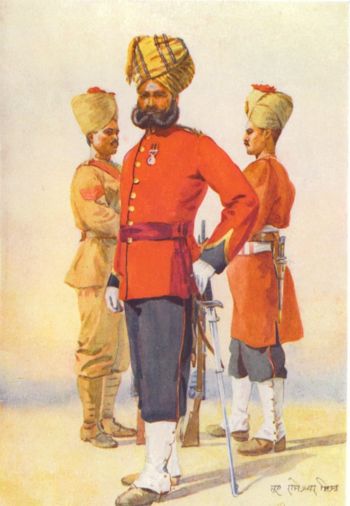Nah .. My bad.. It was purbias,Rajputs & sultans Muslim troops..
Yes they do. Some details :
The
1st Brahmans was an infantry regiment of the
British Indian Army. It was raised at
Oudh by Captain T Naylor in 1776 for service in the army of Nawab Wazir of Oudh, and was known as the Nawab Wazir's Regiment. It was transferred to the
East India Company in 1777. In 1922, it was designated as the 4th Battalion
1st Punjab Regiment. It was disbanded in 1931.
The regiment was the senior-most among the twelve Bengal Native Infantry regiments that survived the Great
Indian Rebellion of 1857-58. It was accordingly one of the small number of Bengal regular infantry regiments to retain the traditions of East India Company service in the new post-Mutiny army. Renumbered as the 1st of the Bengal line, it subsequently saw active service in the
Third Anglo-Burmese War of 1885-87. Following the
Kitchener reforms of the Indian Army, when the names of the presidencies were dropped, the regiment became the 1st Brahman Infantry in 1901.the regimental centre of the 1st Brahmans was located at
Allahabad and it was linked with the 3rd Brahmans. The regiment was recruited from United Provinces
Brahmins, Garhwali Brahmins and some Punjabi Mussalmans.
There were other Brahmin Battalions too.
1st & 3rd Brahman Infantry
British and Indian officers of the 1st Brahmans, 1912
Regimental Hockey Team of the 1st Brahmans, 1910 (c)











